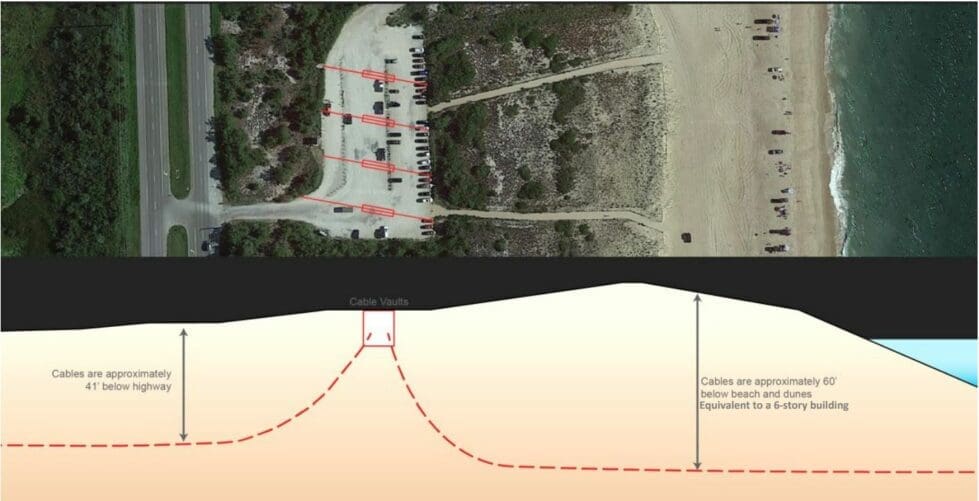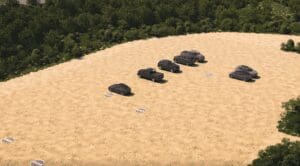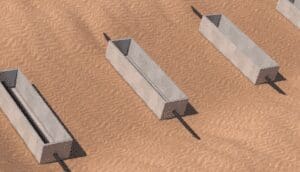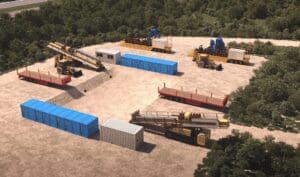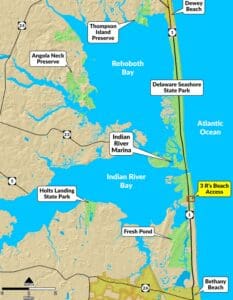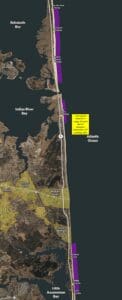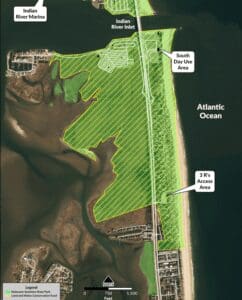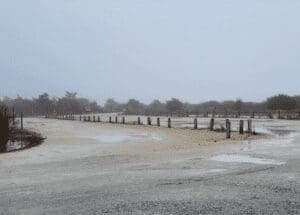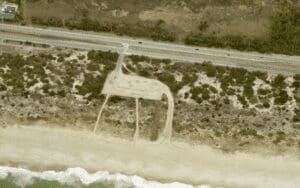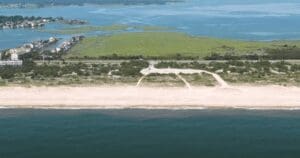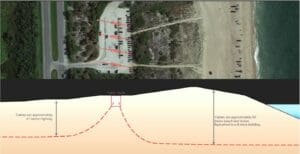
DNREC details how wind farm cable will come ashore in park
State officials this week laid out the way they expect transmission lines from an offshore wind farm to be installed under the 3 Rs Beach in Delaware Seashore State Park.
During an information open house at Bethany Town Hall Tuesday, DNREC representatives displayed posters around the room loaded with information.
One said four cables will be bored 60 feet under the 3Rs Beach to the parking lot. Each cable will be installed in an underground vault with buried electrical transmission lines.
The cables will be 40 feet before the wetlands into the Indian River Bay.
Ultimately the electrical cables will be connected to the existing Delmarva Power & Light Indian River substation facility adjacent to the Indian River Power Plant.
Ray Bivens, director of DNREC’s Division of Parks and Recreation, would not talk about the boring process or anything other than “the impact on recreational activities at the park and, specifically, the parking lot where construction is anticipated to be taking place.”
To put the depth of the boring in perspective, the nearby Fire Control Tower 3 is six stories tall, Bivens said.
A story is generally considered 10 feet.
The parking lot will have an excavation in its center that will 233 feet long, 60 feet wide and 15-feet deep.
Each concrete vault would be 47 feet long, 12 feet wide and 11 inches deep and capped with sectional concrete roof covers. Each would have two manhole covers, meaning eight will be visible in the parking lot.
Manhole accesses are capped with 36-inch recessed covers. They will rarely need to be accessed, Bivens said.
The vaults will include cable, joints and fiber optic lines. All necessary components will be insulated and there will be no additional high voltage equipment inside the walls.
Construction would be done in the off-season, likely between Sept. 15 and May 15, he said. Only construction personnel will be allowed there during that time, a poster said.
During construction only, markers and buoys would be visible to support construction and installation of cables on the Atlantic Ocean and bay sides.
“Temporary disturbances would remain within limits of the parking area,” one poster said. “”There will be no disturbance of the dunes, wetland habitats or the beach.”
Excavated material will be repurposed as cover material, with any extra transported elsewhere after consultation with DNREC.
The site will be restored to its original grade, elevation and material, a poster said.
The parking lot most likely will remain a sand lot, Bivens said. If it was paved, he said, sand would blow across it anyway, he said.
Asked if boring the cables through would affect the park or wildlife, Bivens said no.
Bivens said the offshore wind land lease and construction would be treated like any other utility, such as cell towers, power lines and water pipes.
The presentation noted there already is a T-Mobile cell tower at Delaware Seashore State Park and a Verizon cell tower at Cape Henlopen State Park.
ALSO IN THE NEWS: Bill adding asexuality, pansexuality to law heads to House
“Once construction is over, a lot of people won’t even notice the access manholes,” Bivens said.
He said construction in the parking lot shouldn’t disturb much.
“It’s not like a bunch of trees need to go down,” Bivens said.
The state of Delaware announced in December that it had opened formal negotiations with US Wind for the potential lease of state land at 3 Rs Beach to deliver power from the turbines off Ocean City, Maryland, to the regional electrical grid.
A deal would bring $100 million in benefits to the state, Gov. John Carney said in a press release.
The announcement caused an uproar among people who don’t want to see the wind farms from shore, who fear damage to the beach and area wildlife, who don’t believe wind farms are necessary, and who expect any power from them to be much more expensive than other power sources.
Ocean City, Maryland lies on the south side of Fenwick Island, and the turbines – which can be up to 983 feet tall – will be visible from Delaware.
US Wind’s projects, MarWin and Momentum Wind, will be allowed to install up to 121 turbines.
Shawn Garvin, DNREC director, said in a press release before the town hall that the agency is committed to engaging the public to the greatest extent possible throughout the transmission line project’s development.
The US Wind Projects are currently going through a federal permitting process that is separate from any state process. The federal Bureau of Ocean Energy Management now is reviewing input from a recent public comment process on the project’s environmental impact.
Should the projects proceed, state environmental permits will also be required.
Cables under popular beach
Tuesday’s four-hour event featured diagrams and displays on easels set up in a circle around the room, each station manned by a park staff member ready to answer questions.
The informational posters showing the existing parking area that will be impacted, inground-infrastructure, impact during construction, the proposed construction area and any anticipated restrictions on recreational access during the construction period.
The wind turbines themselves and other possible parts of the project are subject to federal and state permitting processes. They have or will be the subject of future opportunity for public comment, the state press release said.
3 R’s Beach is popular for beachgoers to use for swimming, sunbathing, fishing, picnicking and walking on the beach.
It’s also one of the state’s most popular surf fishing destinations.
Vehicle counts from Saturdays, Sundays, Wednesdays and holidays during peak season identified more than 2,300 vehicles surf fishing there.
Share this Post


